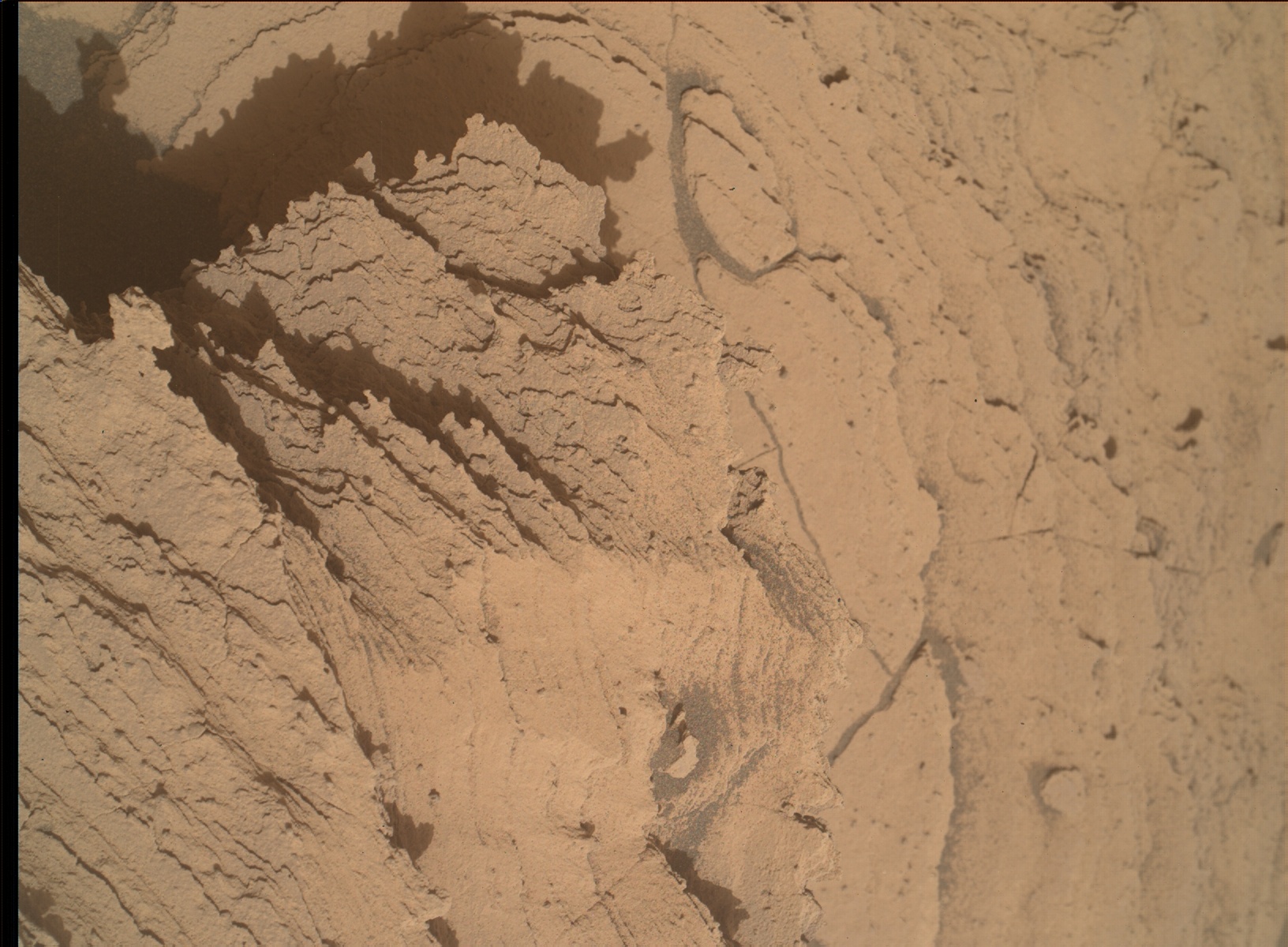3 min read

Earth planning date: Wednesday, November 1, 2023
Today we begin the final countdown into Mars solar conjunction (when Mars is effectively on the other side of the sun and we can’t reliably communicate with Curiosity) – only two more planning sessions after today. In these final days before conjunction, we begin reducing the types of activities we allow in our plans because we do not want to risk having a fault that we do not have time to address. This plan would be our last chance to do full contact science, but since we have sample in the drill we actually can’t point other instruments at the ground. We also don’t have a lot of power to play with, as Curiosity is still recovering from the SAM analysis we did in the prior plan. As a result, our drill campaign is now on hold and we are focusing on imaging today.
On the first sol of our two-sol plan we have about an hour of imaging, beginning with a Navcam image of the open SAM inlet cover. We do this after each sample drop-off to make sure we don’t see a lot of spilled sample around the inlet. We couldn’t do this after the drop-off in the last plan because it was too late to get good lighting. After that, Mastcam is doing some additional testing on the filter wheel and taking a 10x6 mosaic of the Sequoia workspace. Next, ChemCam is taking a 5-spot mosaic of “Aperture Peak,” which is a ridge that appears to be made of vein material. After a nap, we kick of a SAM monthly maintenance activity.
The next morning, Curiosity wakes up for some additional imaging. The morning activities include several atmospheric observations, looking for dust and clouds that might for this time of year. This includes a Mastcam solar tau, Navcam suprahorizon movie and a large Navcam dust devil survey. ChemCam also takes two long-distance mosaics, a 10-frame one looking up hill at the upper Gediz Vallis Ridge and a 7-frame one looking across the crater at the Peace Vallis channel near the crater wall. Mastcam finishes up the morning block by imaging “Bench Lake,” which is a bedrock feature with a distinctive texture and taking a post-ChemCam look at Aperture Peak. After a long nap, Curiosity wakes up for some late afternoon observations including a set of Navcam sky flats (looking for dust features on the lenses) and a set of twilight movies looking for clouds. While we did not get any new images from the last plan, this image of the crater rim is similar to the one in today’s plan and we’ll be able to compare to see how the dust in the atmosphere is changing.
Written by Ashley Stroupe, Mission Operations Engineer at NASA's Jet Propulsion Laboratory







